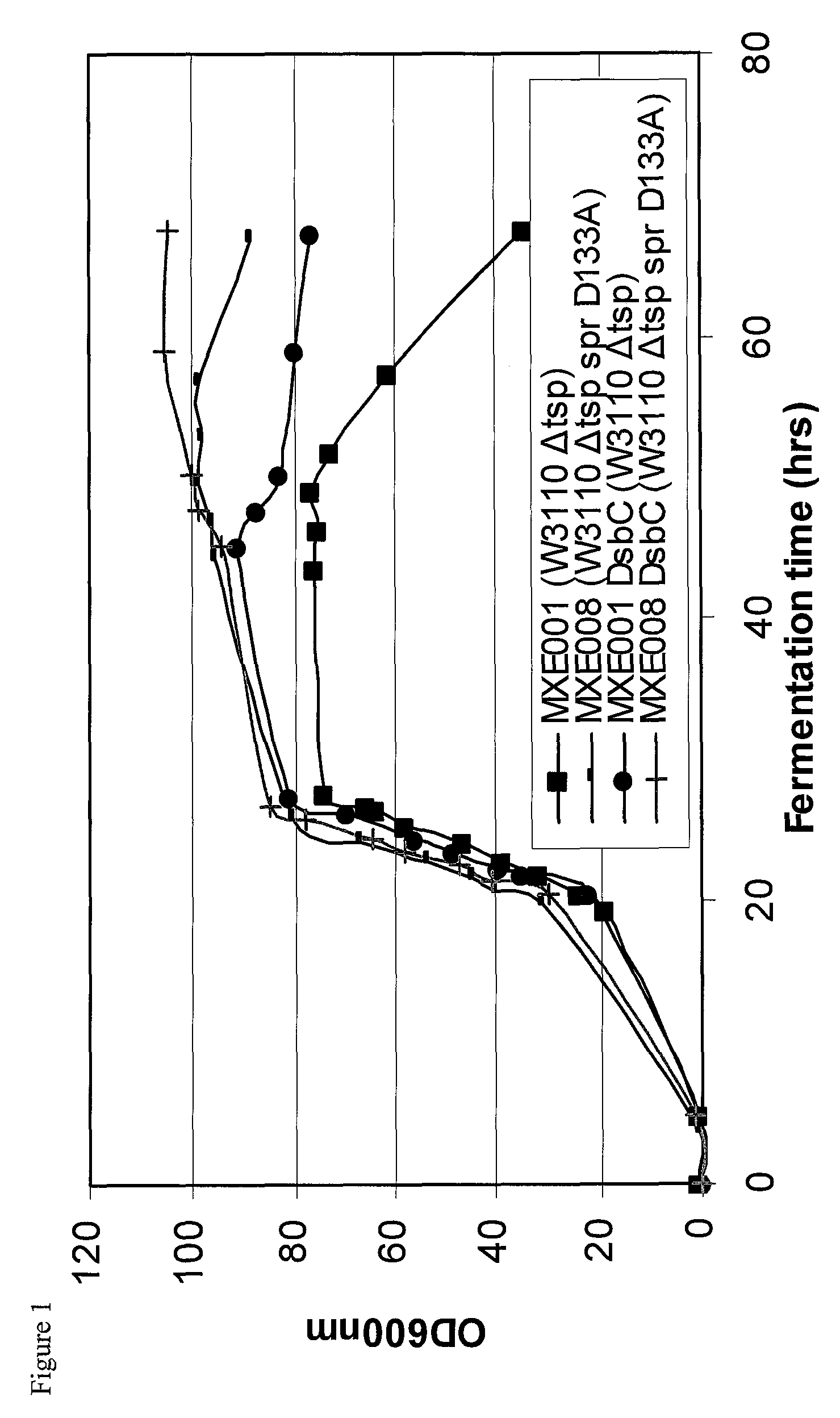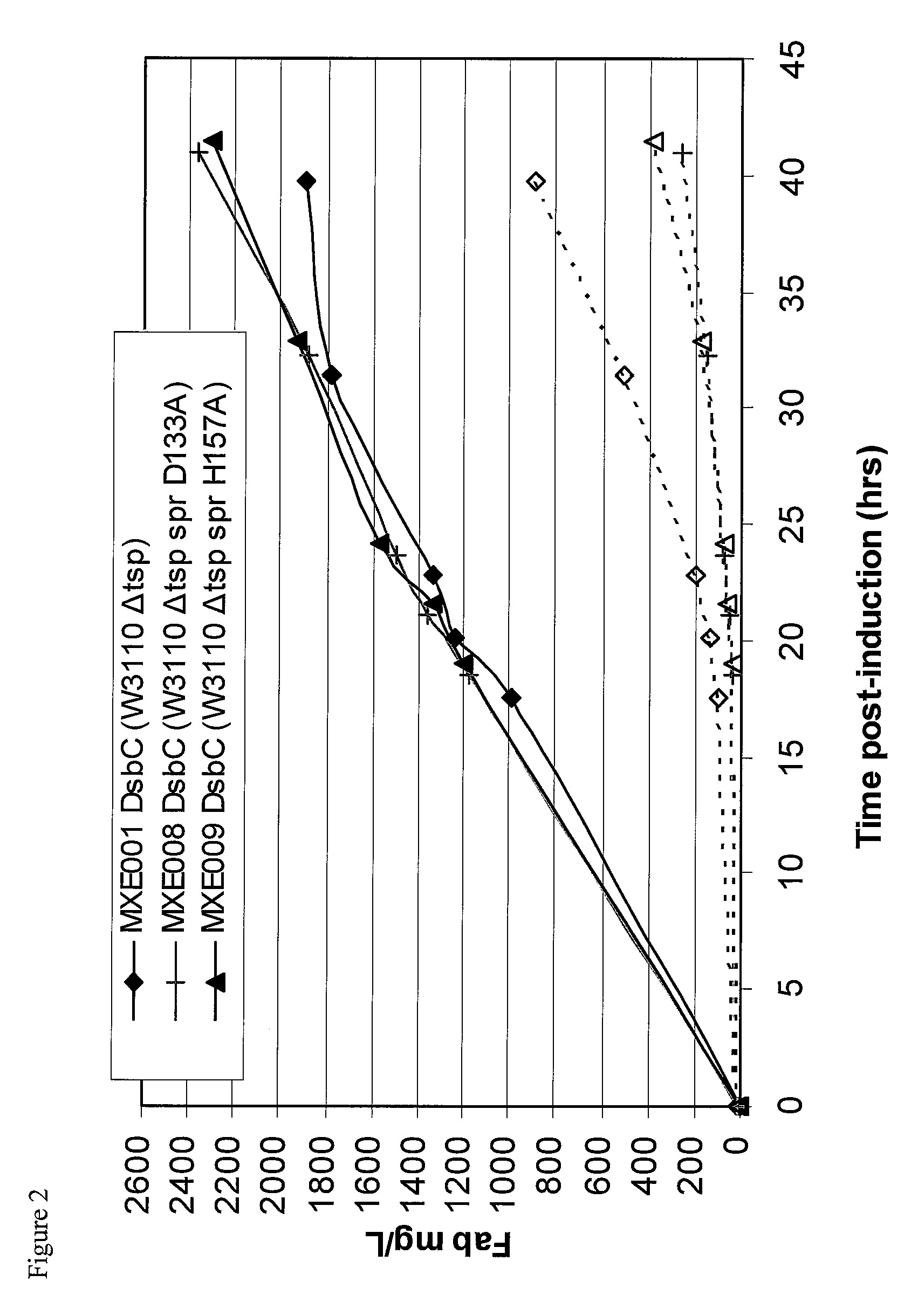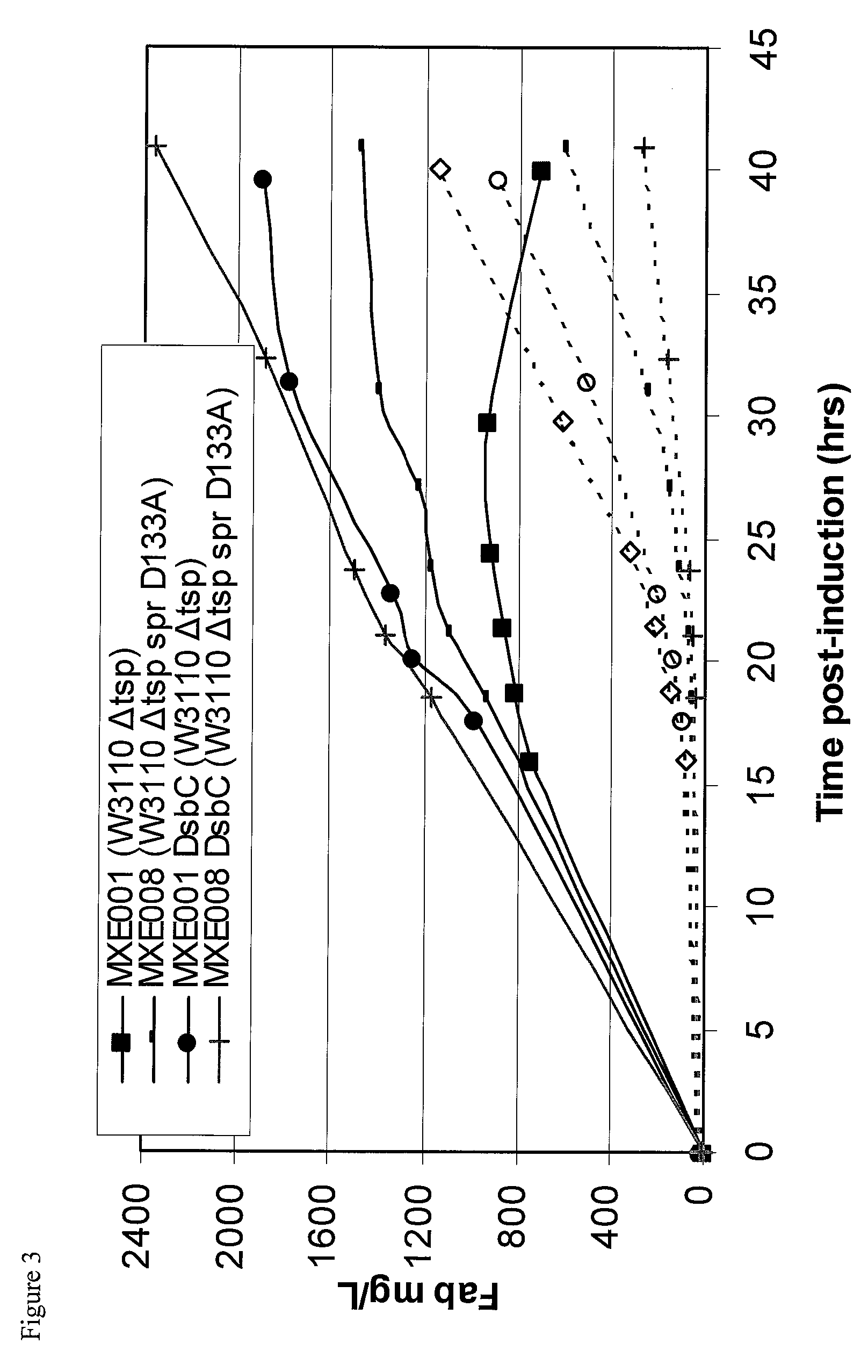Bacterial host strain expressing recombinant DsbC and having reduced Tsp activity
a technology of recombinant dsbc and host strain, which is applied in the field of bacteria host strains expressing recombinant dsbc and having reduced tsp activity, can solve the problems of significant reduction of active protein yield, difficult to produce protease sensitive proteins, etc., and achieves advantageous growth and protein production phenotypes, and reduce tsp protein activity
- Summary
- Abstract
- Description
- Claims
- Application Information
AI Technical Summary
Benefits of technology
Problems solved by technology
Method used
Image
Examples
example 1
Generation of Cell Line Carrying Mutated Tsp Gene MXE001 (ΔTsp)
[0366]The MXE001 strain was generated as follows:
[0367]The Tsp cassette was moved as Sal I, Not I restriction fragments into similarly restricted pKO3 plasmids. The pKO3 plasmid uses the temperature sensitive mutant of the pSC101 origin of replication (RepA) along with a chloramphenicol marker to force and select for chromosomal integration events. The sacB gene which encodes for levansucrase is lethal to E. coli grown on sucrose and hence (along with the chloramphenicol marker and pSC101 origin) is used to force and select for de-integration and plasmid curing events. This methodology had been described previously (Hamilton et al., 1989, Journal of Bacteriology, 171, 4617-4622 and Blomfield et al., 1991, Molecular Microbiology, 5, 1447-1457). The pKO3 system removes all selective markers from the host genome except for the inserted gene.
[0368]The following plasmids were constructed.
[0369]pMXE191 comprising the knockout ...
example 2
Generation of Cell Lines Carrying Mutated Spr Gene and Cell Lines Carrying Mutated Tsp Gene and Mutated Spr Gene
[0391]The spr mutations were generated and selected for using a complementation assay.
[0392]The spr gene was mutated using the Clontech® random mutagenesis diversity PCR kit which introduced 1 to 2 mutations per 1000 bp. The mutated spr PCR DNA was cloned into an inducible expression vector [pTTO CDP870] which expresses CDP870 Fab′ along with the spr mutant. This ligation was then electro-transformed into an E. coli strain MXE001 (ΔTsp) prepared using the method found in Miller, E. M. and Nickoloff, J. A., “Escherichia coli electrotransformation,” in Methods in Molecular Biology, vol. 47, Nickoloff, J. A. (ed.), Humana Press, Totowa, N.J., 105 (1995). The following protocol was used, 40 ul of electro competent MXE001, 2.5 ul of the ligation (100 pg of DNA) was added to a 0.2 cm electroporation cuvette, electro-transformation was performed using as BioRad Genepulser Xcell w...
example 3
Generation of Plasmid for Fab′ and DsbC Expression
[0429]A plasmid was constructed containing both the heavy and light chain sequences of an anti-TNF Fab′ and the sequence encoding DsbC.
[0430]A dicistronic message was created of the anti-TNFα Fab′ fragment (referred to as CDP870) described in WO01 / 94585. The upstream cistron encoded the light chain of the antibody (SEQ ID NO: 13) whilst the downstream cistron encoded the heavy chain of the antibody (SEQ ID NO: 14). A DNA sequence encoding the OmpA signal peptide was fused to the 5′ end of the DNA coding for each of the light chain and the heavy chain to allow efficient secretion to the periplasm. The intergenic sequence (IGS) 2 was used as shown in SEQ ID NO: 37.
[0431]Plasmid pDPH358 (pTTO 40.4 CDP870 IGS2), an expression vector for the CDP870 Fab′ (an anti-TNF Fab′) and DsbC (a periplasmic polypeptide), was constructed using conventional restriction cloning methodologies which can be found in Sambrook et al 1989, Molecular cloning: ...
PUM
| Property | Measurement | Unit |
|---|---|---|
| temperature | aaaaa | aaaaa |
| temperatures | aaaaa | aaaaa |
| temperatures | aaaaa | aaaaa |
Abstract
Description
Claims
Application Information
 Login to View More
Login to View More - R&D
- Intellectual Property
- Life Sciences
- Materials
- Tech Scout
- Unparalleled Data Quality
- Higher Quality Content
- 60% Fewer Hallucinations
Browse by: Latest US Patents, China's latest patents, Technical Efficacy Thesaurus, Application Domain, Technology Topic, Popular Technical Reports.
© 2025 PatSnap. All rights reserved.Legal|Privacy policy|Modern Slavery Act Transparency Statement|Sitemap|About US| Contact US: help@patsnap.com



